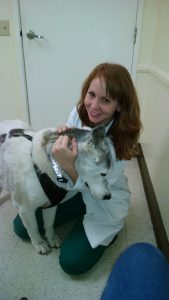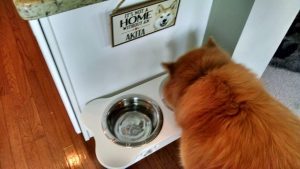 Taking care of your spouse, children, and yourself is a chore in itself. Each person in the home has unique needs depending on a variety of factors, but the same can be said about your dog. Canines, both young and old, have unique dietary, emotional, and physical needs – just because they cannot vocalize these in a way we understand, it does not mean they don’t exist!
Taking care of your spouse, children, and yourself is a chore in itself. Each person in the home has unique needs depending on a variety of factors, but the same can be said about your dog. Canines, both young and old, have unique dietary, emotional, and physical needs – just because they cannot vocalize these in a way we understand, it does not mean they don’t exist!
With all of the day-to-day stresses that family life brings, it can be all too easy to avoid or even outright neglect your dog’s health. This is why it is imperative to observe all changes in your four-legged friend’s routine, and also to take proactive measures in ensuring their health is a top priority.
Today, let’s look at five specific tips that families can act on to ensure that their dog’s health is as good as it can be, just like every other member of the family.
Optimize Your Dog’s Diet
It seems every year, a new dietary health phase makes its way into the home of countless families. From vegan diets to high-protein fads, some people are always finding new diet crazes to bring into their households. However, with dogs, sticking to what works is best.
For eons, dogs and related canine breeds have optimized their diets based on a variety of real-world factors. Families should heavily consider the daily dietary needs of their dogs and separate them from their own personal needs.
Take Bella & Duke, for instance. Their premium raw food diet formulations are specifically designed to provide dogs with a balanced diet that balances needs for protein, fats and carbohydrates. Given that in-store dog food formulas use grains that can cause everything from vitamin deficiencies to pancreatitis in dogs, choosing a balanced raw formula like Bella & Duke offers prioritizes your pup’s dietary needs, offering increased calcium, phosphorus, and protein. If you are concerned about the symptoms of pancreatitis in dogs, you can learn more by reading this article on the Bella & Duke website: Pancreatitis in Dogs – A Guide to Help Your Dog Thrive.
Spay or Neuter Your Canine Friend
Once puppies reach a few months in age, biological tendencies and hormones begin flourishing. Many people understand the benefits of spaying and neutering in terms of unwanted pregnancies, but what other health benefits do they provide?
For male dogs, castration/neutering significantly reduces the likelihood of prostate diseases and can improve otherwise anti-social behavior. For female dogs, neutering reduces the chances of breast cancer, infections, and incontinence. For a full list of benefits of castration and neutering, click here.
 Prioritize Exercise
Prioritize Exercise
People young and old need enough exercise to be healthy, whether it is to tone muscle, improve stamina, or maintain a healthy weight. Should anybody expect differently for their four-legged friends? This is one example of where improving your family pet’s health can be a joint affair.
From taking daily walks to socializing your pets at local dog parks, parents, children, and pets alike can all enjoy a bit of exercise and fun without the need for separate activities. Scientists recommend 20 minutes of moderate activity per day for adults and two to three times that amount for most dogs. While your puppy can find opportunities to romp both inside and outside the home each day without your involvement, combining both family and dog exercise will help improve the health of every member of the family.
Dedicate Time for Play
Even if you’re engaged in daily walking and socializing events with your dog, socializing and entertainment are just as important for your four-legged friend as they are for you. Dogs are social creatures and need both physical and emotional attention. Families can find opportunities to play with their dogs at home every single day through a variety of simple but productive activities.
From swimming around the pool to playing hide-and-seek inside the home, your pup is naturally curious and energetic: it’s not difficult to arouse his or her interest (assuming they’re healthy!). A variety of dog toys and impromptu activities can help make the process both more involved for the family and more interesting for the dog; whether it be hiding treats around the home or grooming them to picking up their toys, families can bolster both physical and emotional well-being for dogs of all ages.

Schedule Regular Vet Visits
Regardless of the measures your family takes at home, the odds are that none of you possess veterinarian training. As such, monitoring your dog’s health – especially as he or she ages – requires professional attention.
Depending on age and prior condition, regular visits to the vet should occur every 6-12 months. These visits may be routine and involve immunizations but can also detect emerging health conditions through a variety of tests. Rather than allow your dog’s health to deteriorate, regular vet visits help ensure your canine compatriot is at optimal health regardless of age.
From an abundance of energy to spotting the symptoms of pancreatitis in dogs, monitoring your four-legged friend’s health needs is paramount. Just as you would care for your child, your dog needs a good diet, exercise, socialization, and health check-ups. Any family who utilizes these five tips can maximize both the health and lifespan of their canine companions, ensuring their friendship and loyalty for years to come.












